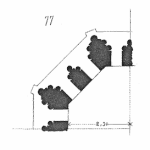
Asset Performance management is a vast expansion on the highly successful concepts of Condition Monitoring and Condition Based Maintenance.
Recently we co-hosted a webinar on the leverage of Industry 4.0 technologies such as the IIoT and AI to show what is really involved in Asset Performance Management. Here is a recording of that video webinar.
[Read more…]













 Ask a question or send along a comment.
Please login to view and use the contact form.
Ask a question or send along a comment.
Please login to view and use the contact form.